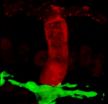(Press-News.org) CLEVELAND -- A catheter procedure that closes a hole in patients' hearts was no more effective than medical therapy in preventing recurrent strokes, according to a new study published in the March 15 issue of the New England Journal of Medicine.
In the CLOSURE I trial, clinical researchers compared a catheter procedure plus medical therapy with medications alone to prevent new strokes or transient ischemic attacks (TIAs) in patients between 18 and 60 years old with an unexplained ("cryptogenic") stroke or TIA and a patent foremen ovale (PFO) – a hole between the heart's two upper chambers.
In the ground-breaking, international multi-site study led by University Hospitals (UH) Case Medical Center and Case Western Reserve University School of Medicine, researchers sought to demonstrate the superiority of the STARFlex® Septal Closure System over medical therapies (aspirin or warfarin) alone. Instead, results showed no statistically significant differences between the two therapies.
"These important findings will serve as a guidepost in the prevention of stroke in patients with PFO," said Anthony J. Furlan, MD, lead investigator of the study and Chairman of the Department of Neurology at UH Case Medical Center and Case Western Reserve University School of Medicine.
In an accompanying editorial, S. Claiborne Johnston, MD, PhD, from the University of California, San Francisco, wrote, "…CLOSURE I provides the best evidence available regarding the role of closure in stroke prevention and should not be ignored. The results of the trial do not support closure of a patent foramen ovale to prevent stroke in patients who have had a stroke or a TIA of unclear etiology."
The editorial also notes that it took nine years for the results of this trial to be reported and during that time, approximately 80,000 patients have had a PFO closed with the use of a device at an average cost of $10,000 per procedure. "Even if only half these patients were treated by this method for the purpose of preventing stroke, it would suggest that during that period of time $400 million was spent on a procedure that had no apparent benefit, to say nothing of the potential clinical risks involved," wrote Dr. Johnston.
Strokes of unknown origin – cryptogenic strokes – have several causes, including PFO, a hole that is vital to fetal survival between the heart's two upper chambers if it doesn't close completely after birth. If a blood clot arises in a vein and passes through the hole and reaches the brain (called "paradoxical embolism"), a stroke results. In roughly 20 percent of adults, remnants of the hole persist.
CLOSURE I is the first completed prospective, randomized, two-arm superiority trial of percutaneous PFO device closure versus medical therapy alone in cryptogenic stroke patients using the STARFlex Septal Closure System. The device, attached to a catheter and threaded into the upper heart, applies a "clamshell" patch on both sides of the hole.
The trial's primary endpoint was the difference in the stroke and TIA rates between the two patient groups at two years, death from all causes in the first 30 days, and death from neurological causes at 30 days or more.
Dr. Furlan and colleagues enrolled 909 patients at 87 United States and Canadian sites during 64 months ending October 2008. Researchers randomized patients to either medical therapy (325 mg of aspirin or the appropriate warfarin dose, or a combination of both) or PFO closure and medical therapy (75 mg of clopidogrel for six months and 325 mg of aspirin for two years).
"Based on the trial results, even though a patient had a PFO and a recurrent stroke, the hole may be totally coincidental to the second stroke," Dr. Furlan said. "The undeniable message here is that too many of these holes are being closed with an off-label procedure, but partly that is because we've never had a randomized trial to guide us. Furthermore, our criteria for diagnosing paradoxical embolism and the potential efficacy of PFO closure in patient subgroups require further study. Until then we would advise initial secondary stroke prevention with medical therapy in most patients with unexplained stroke or TIA and a PFO. "
INFORMATION: NMT Medical, Boston funded the study.
About University Hospitals
University Hospitals serves the needs of patients through an integrated network of hospitals, outpatient centers and primary care physicians. At the core of our health system is University Hospitals Case Medical Center. The primary affiliate of Case Western Reserve University School of Medicine, University Hospitals Case Medical Center is home to some of the most prestigious clinical and research centers of excellence in the nation and the world, including cancer, pediatrics, women's health, orthopedics and spine, radiology and radiation oncology, neurosurgery and neuroscience, cardiology and cardiovascular surgery, organ transplantation and human genetics. Its main campus includes the internationally celebrated UH Rainbow Babies & Children's Hospital, ranked fourth in the nation for the care of critically ill newborns; UH MacDonald Women's Hospital, Ohio's only hospital for women; and UH Seidman Cancer Center, part of the NCI-designated Case Comprehensive Cancer Center. For more information, go to www.uhhospitals.org
END
VIDEO:
Using two-photon imaging, the researchers were able to see dendritic cells, shown in green, in the intestine of a living mouse.
Click here for more information.
With every meal, immune cells in the intestine stand like sentries at a citadel, turning away harmful bacteria but allowing vitamins and nutrients to pass.
Now, researchers at Washington University School of Medicine in St. Louis have identified the cells that chaperone food antigens, or proteins, in the ...
Of the $25 billion federal settlement funds for mortgage foreclosure abuses, Wisconsin will receive $140 million. The settlement money is being paid by J.P. Morgan Chase, Bank of America, Wells Fargo & Co, Citigroup and Ally (formerly GMAC), and is intended to help homeowners having difficulty making their mortgage payments and individuals who were the victims of improper foreclosures.
According to Assistant Attorney General Holly Pomraning in a recent TheNorthwestern.com article, Wisconsin's share of the settlement will be divided and distributed as follows:
- ...
Foodborne disease outbreaks caused by imported food appeared to rise in 2009 and 2010, and nearly half of the outbreaks implicated foods imported from areas which previously had not been associated with outbreaks, according to research from the Centers for Disease Control and Prevention, presented today at the International Conference on Emerging Infectious Diseases in Atlanta.
"It's too early to say if the recent numbers represent a trend, but CDC officials are analyzing information from 2011 and will continue to monitor for these outbreaks in the future," said Hannah ...
A team of researchers led by scientists at The Rockefeller University has identified a novel mechanism by which influenza interferes with antiviral host response. The finding, reported in this week's issue of the journal Nature, shows that the immunosuppressive NS1 protein of the influenza A virus hijacks key regulators of antiviral gene function by mimicking a core component of gene regulating machinery. The results they describe have major implications for our understanding of the biology of seasonal influenza virus and its pathogenesis. This research also suggests a ...
There was a lot of excitement a few years ago following the discovery of the DNA origami technique. The approach could be used to build nanoparticles of a given shape and size. However, real applications, such as nano-tweezers, remained out of reach. An international team of researchers led by Professor Tim Liedl of the Ludwig-Maximillians-Universitaet Muenchen and Professor Friedrich Simmel of the Technische Universitaet Muenchen have now succeeded in building nanoparticles using optically active DNA building blocks that can be used to modify light in very specific ways.
Coupling ...
STANFORD, Calif. -- A week ago, you started a new prescription medication for acne. Today, you feel dizzy and short of breath and have difficulty concentrating. Your symptoms are not listed in the package insert as possible side effects of the drug, but why else would you be feeling so odd?
Unfortunately, there's no easy answer. Clinical trials are designed to show that a drug is safe and effective. But even the largest trials can't identify irksome or even dangerous side effects experienced by only a tiny proportion of those people taking the drug. They also aren't designed ...
Menlo Park, Calif. — Researchers from Stanford University and the U.S. Department of Energy's SLAC National Accelerator Laboratory have created the first-ever system of "designer electrons" – exotic variants of ordinary electrons with tunable properties that may ultimately lead to new types of materials and devices.
"The behavior of electrons in materials is at the heart of essentially all of today's technologies," said Hari Manoharan, associate professor of physics at Stanford and a member of SLAC's Stanford Institute for Materials and Energy Sciences, who led the research. ...
Families throughout the nation continue to struggle financially. In fact, the prospect of economic stability continues to look so grim professionals have coined this period of time the Great Recession. Many depend on unemployment benefits to make ends meet during these difficult times, but what happens when they run out?
Now, more and more people are looking to Social Security Disability benefits when their unemployment ends. Whether people were disabled before their unemployment began or became disabled while receiving unemployment, Social Security Disability offers ...
In preclinical studies, researchers at SRI International and Astraea Therapeutics have recently evaluated the role of a new drug receptor target that shows promise for the treatment of drug addiction.
This potential new drug target belongs to a class of receptors called the nicotinic acetylcholine receptors (nAChRs). One subtype of nAChRs, called alpha4beta2 is a well-known target for nicotine's addictive effects and the therapeutic effect of the smoking cessation drug varenicline. SRI researchers are now studying another, lesser-known subtype, called alpha3beta4 nAChR, ...
Dehydration is one of the most common forms of nursing home neglect. The risk of dehydration is particularly acute in patients who suffer from health problems that render them incapable of properly communicating their needs.
Nursing home dehydration can happen for a number of different reasons. Some patients aren't physically able to drink from a glass, either because they have difficulty swallowing or because they are unable to sit upright. In other cases, patients with cognitive or emotional difficulties may refuse certain beverages. In the worst cases the neglect ...


